
Given that dirty washing piles up quickly, and that doing laundry is a regular household task, it's no wonder that energy costs can often stack up.
When trying to save money and cut back on energy consumption, it might seem like laundry is the enemy. We can't simply stop doing laundry, after all. But, are there ways to cut costs and keep energy bills lower?
Here, we spoke to sustainable cleaning experts and energy pros to find out how to do laundry to save energy and money – and be kinder to the planet.
How to save energy when doing laundry
Saving energy when doing laundry also means saving money when doing laundry too, making it a win-win for you and the planet.
1. Use eco-cycles

One of the best ways to save energy when doing laundry is to pick eco-wash cycles, recommends Catherine Green, sustainable cleaning expert at smol. 'They'll use a cooler temperature and less water, so you'll be saving money,' she explains.
'And don't panic if the cycle time seems longer, it just needs more time to get the job done whilst using less water and heat. But rest assured, you'll still get a great level of clean by the time it's done.'
There are, however, items you should always wash in hot water, such as bed sheets and towels, to successfully kill bacteria and sanitize materials. 'Remember to run a hot cycle every now and again, perhaps when washing your bedding, to prevent bacteria from building up in your machine,' adds Green, as bacteria will cause odors in your washing machine which may affect your laundry. Therefore, it's important to know how to clean a washing machine that smells.
Catherine also points out that most washing machines will let you turn down the temperature across any cycle type, and a 40°C (104°F) wash instead of a 60°C (140°F) wash can cut your energy use in half. 'Go even lower, say, 20°C (68°F) and you'll save up to 66% more energy!' adds Green. 'It's a simple swap with a big impact on both your bills and the environment.'
When washing with low temperatures, Green recommends using smol laundry capsules available at smol, which are designed to give a powerful clean even when washing on a cold wash.
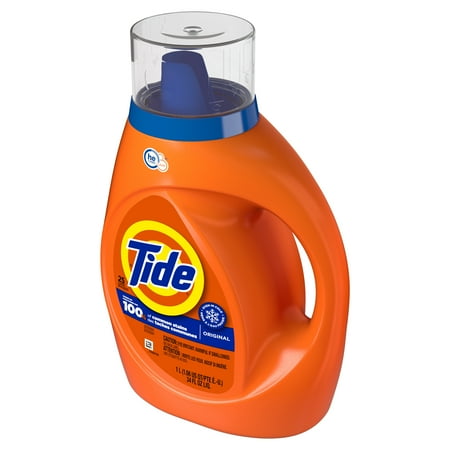
Tide detergent is specially formulated to work in both high efficiency washing machines and cold water, to keep your clothes looking their best without high costs.
2. Wait for a full load

It can be tempting to throw on small washes of sweaty gym kit or muddy trousers, but you should not do laundry every day, and waiting until you have a full load means you can run your washing machine and dryer less.
'It takes just as much energy to run a washing machine with one pair of jeans or a whole basket of clothing,' says Kat Garside, sustainability expert at Integrity Energy. 'Waiting to wash a full load limits the number of cycles run, leading to lower energy use.'
Running smaller loads of laundry could also mean wasting significant amounts of water if you forget to switch it to a small-load setting, continues Garside, and is therefore a laundry mistake to avoid.
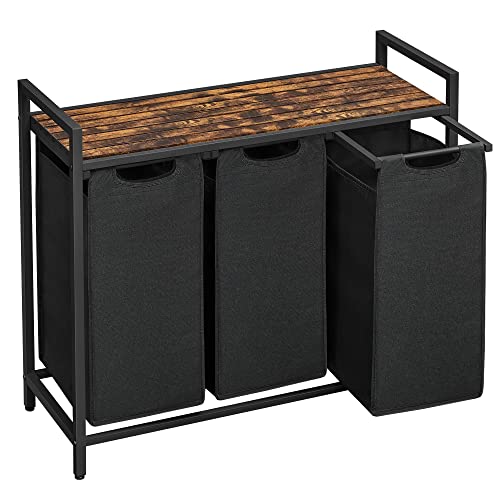
Using a pre-divided laundry basket will help you to see exactly when you have enough of one type of laundry to do a laundry load.
3. Soak and use a stain remover

As one of the golden rules of stain removal, soaking and pre-treating stains makes them easier to remove, meaning you can wash items less to get them clean.
'Soak heavily soiled items in water with a bit of soap before washing,' recommends sustainable cleaning expert Catherine Green. 'Give the stains a gentle scrub before throwing the clothes in the machine,' using a soft-bristled brush such as The Laundress Stain Brush available at Amazon, to help loosen the dirt.
For particularly tough stains, using a pre-treatment stain remover will ensure you can avoid running the wash cycle multiple times or cranking up the heat, and Green recommends the smol bleach-free stain gel available at smol. 'Cleaner clothes, fewer rewashes,' she says.
And, if you're wondering is hot or cold water better for stain removal, it's usually best to opt for lower temperatures to avoid setting stains for good.
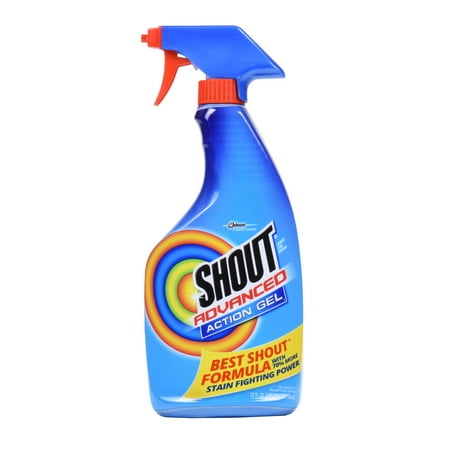
This stain removal spray is formulated specifically to target difficult set stains, such as red wine and makeup, while being gentle on fabrics.
4. Clean the lint trap regularly
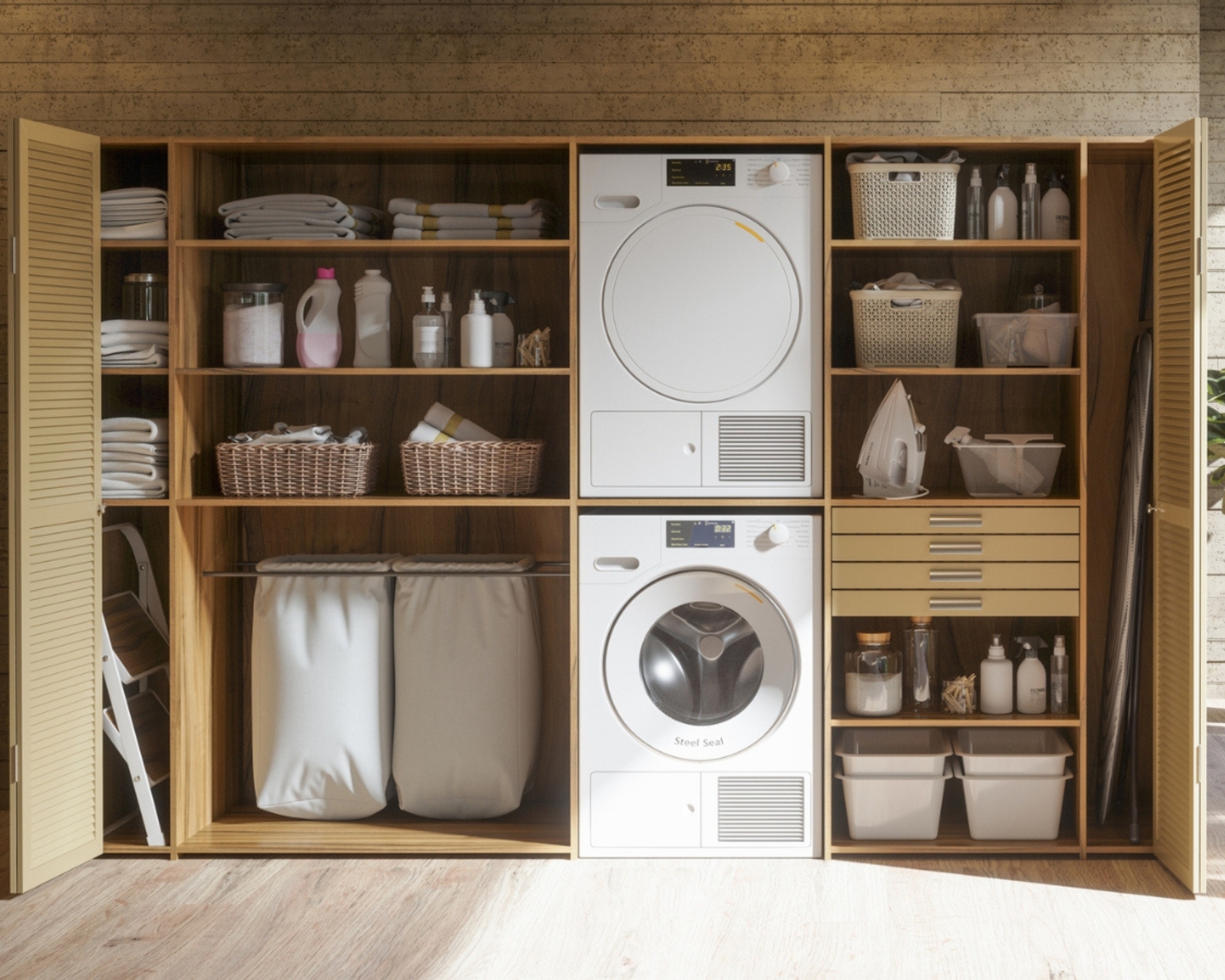
Forgetting to clean your lint trap is a tumble dryer mistake that will not only affect the efficacy of your dryer, but may also be a fire risk.
Energy expert Kat Garside says, 'Keeping your lint trap clean not only helps improve air circulation in your dryer, but it also prevents fire hazards.' If you're not sure how to clean a dryer, our dedicated guide details how to do so step-by-step.
'Periodically use a best vacuum nozzle to remove the often-forgotten excess lint that collects below the lint filter as well,' Kat adds. 'Don't forget to clear lint from any exterior vents as well to keep your dryer running at peak efficiency.'
5. Use energy efficient machines and detergents
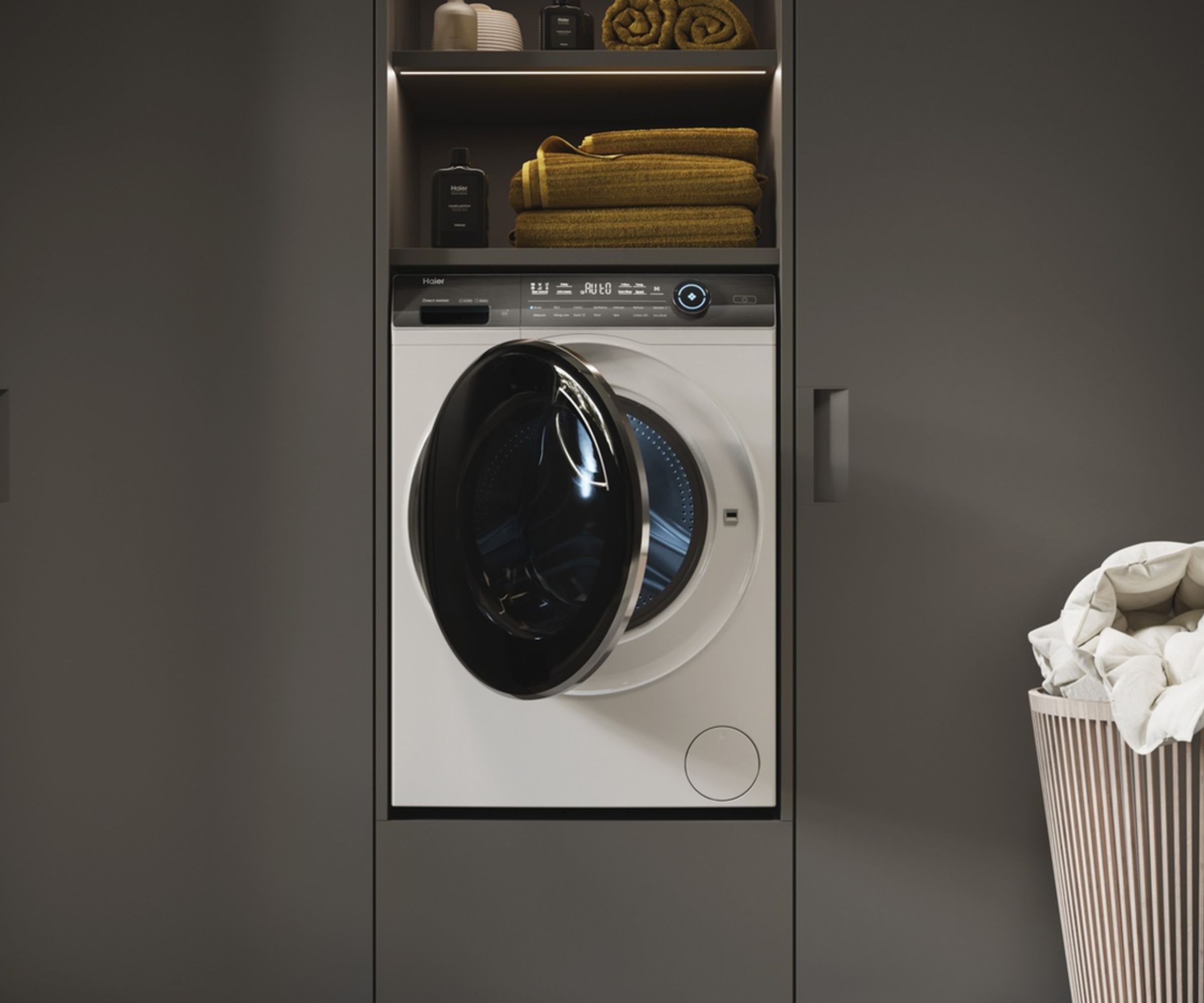
How long does a washing machine last? Experts say around 10 to 13 years, but this is heavily affected by how, and how often, you use it.
Energy expert Kat Garside says, 'If your laundry machines are having trouble cleaning and drying your clothes efficiently, it might be time to consider an upgrade, so look how for any signs its time to replace old appliances. 'When choosing new laundry appliances, look for models bearing Energy Star certification.
'Energy Star is backed by the U.S. Environmental Protection Agency, indicating it meets their strict efficiency standards. Washers with Energy Star certification use 25% less energy and 40% less water per load than traditional models
If you are comparing different models, Garside points out that front-loading washing machines are nearly always more energy efficient than top-loading options, as they let gravity do some of the work for them as the drum rotates, therefore saving energy in the process. You may also want to consider opting for a larger drum size, says Green, as you will be able to wash more clothes in fewer loads, saving on both water and energy.
'High-efficiency machines need high-efficiency detergents,' adds Garside. 'If you choose to upgrade to a highly efficient washing machine, make sure you choose a high-efficiency laundry detergent as well, which produces fewer suds and is quick-acting,' making them the perfect companion for efficient washes that use less water and have shorter cycles.
6. Line-dry washing

There are so many benefits of air-drying laundry, and it's a great way to save money at home, too.
'Skip the tumble dryer as much as possible and take advantage of free drying methods like line drying,' says sustainable cleaning expert Catherine Green. 'Sunlight and fresh air are free!'
If the weather is bad outdoors, Green recommends drying clothes inside out on an airer, such as the Joseph Joseph Eclipse indoor clothes airer, which is perfect for small spaces, placed near a radiator or tower fan (available at Amazon).
'Tumble dryers are one of the most expensive appliances to run, so the less you use them, the more you save,' adds Green. 'And, if you're thinking of a heated clothes airer, make sure to check its wattage – the lower, the better.'
I tried a heater airer and I will never use my tumble dryer again, and we recommend the Heated Clothes Drying Rack available at Amazon if you're looking for ways to cut energy bills.
7. Use dryer balls

If you prefer to use your tumble dryer, energy expert Garside explains why you should be using dryer balls.
'Dryer balls are a great replacement for traditional dryer sheets, which are harmful to the environment,' she says. 'Choose wool or rubber dryer balls to improve air circulation and reduce drying time.'
Dryer balls work by keeping clothes separate in the tumble dryer, while also reducing clothing static. 'Wool options can also be infused with essential oils to add a pleasant, clean scent,' she adds. I ditched dryer sheets for this natural essential oil hack, and my laundry has never smelled better.
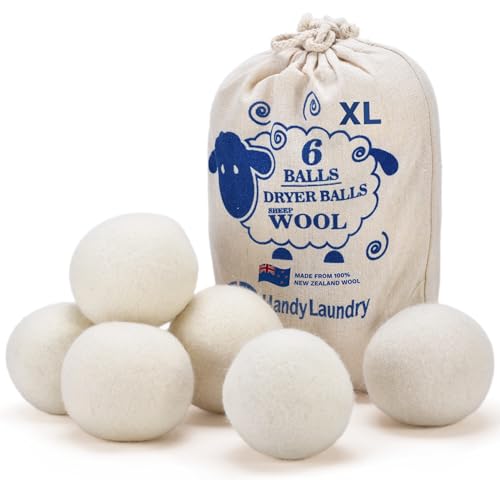
These dryer balls are made from 100% premium New Zealand wool, with no synthetic fillers. They can be used as a replacement to chemical fabric softener, too, and speed up drying time while saving on energy costs.
All prices correct at the time of publication.
8. Use a high-spin speed
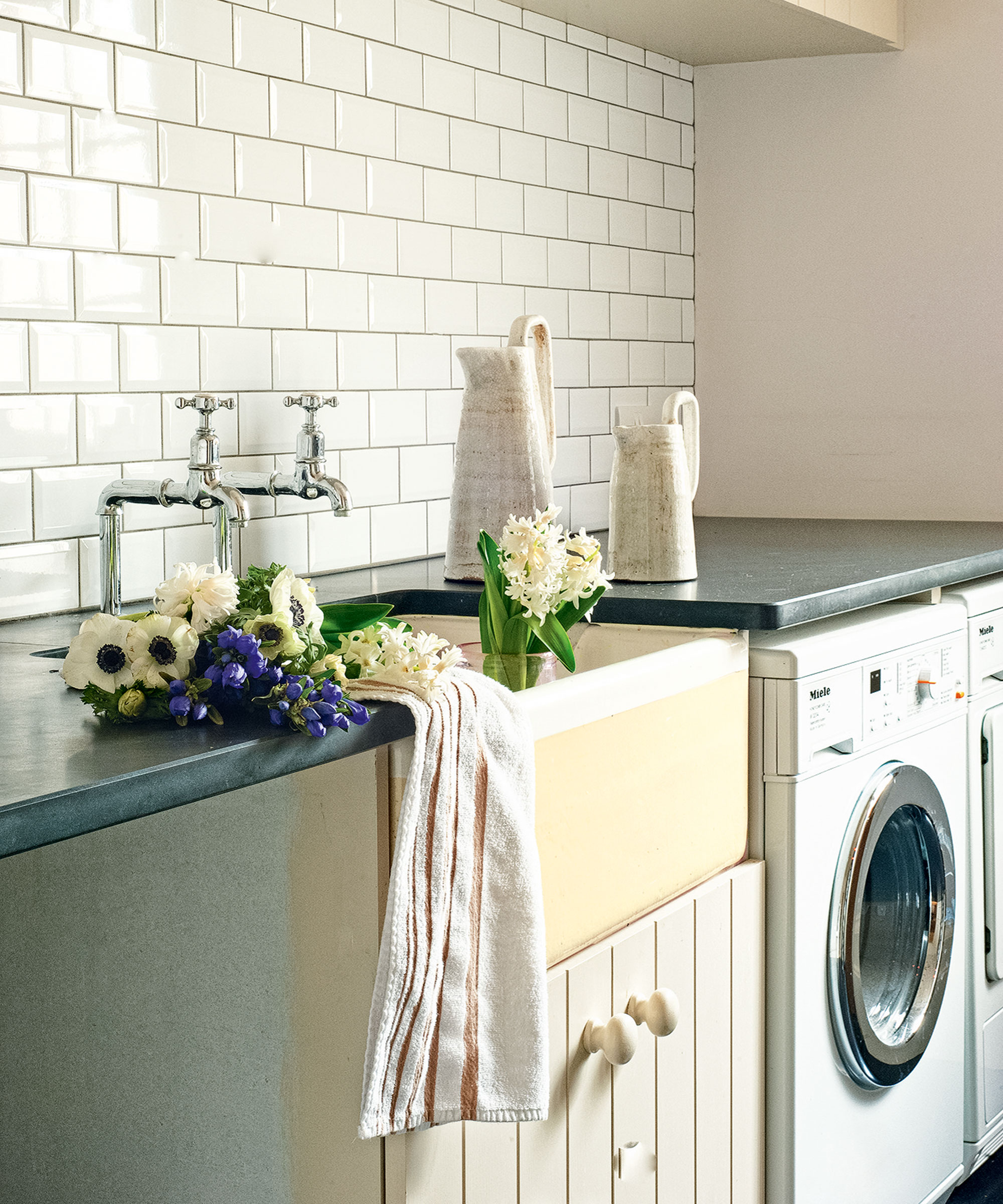
'Use a high spin speed on your machine to extract as much water as possible,' advises sustainable cleaning expert Green. 'This means your clothes will come out almost dry, reducing the time they need to dry, which means if you're using a tumble dryer or a heated airer, you'll use less energy.'
Green warns, however, to be cautious and careful when spinning delicate fabrics, as this may cause damage. If you're unsure, our guide to washing machine settings explains each setting to avoid making any washing machine mistakes.
9. Use off-peak hours
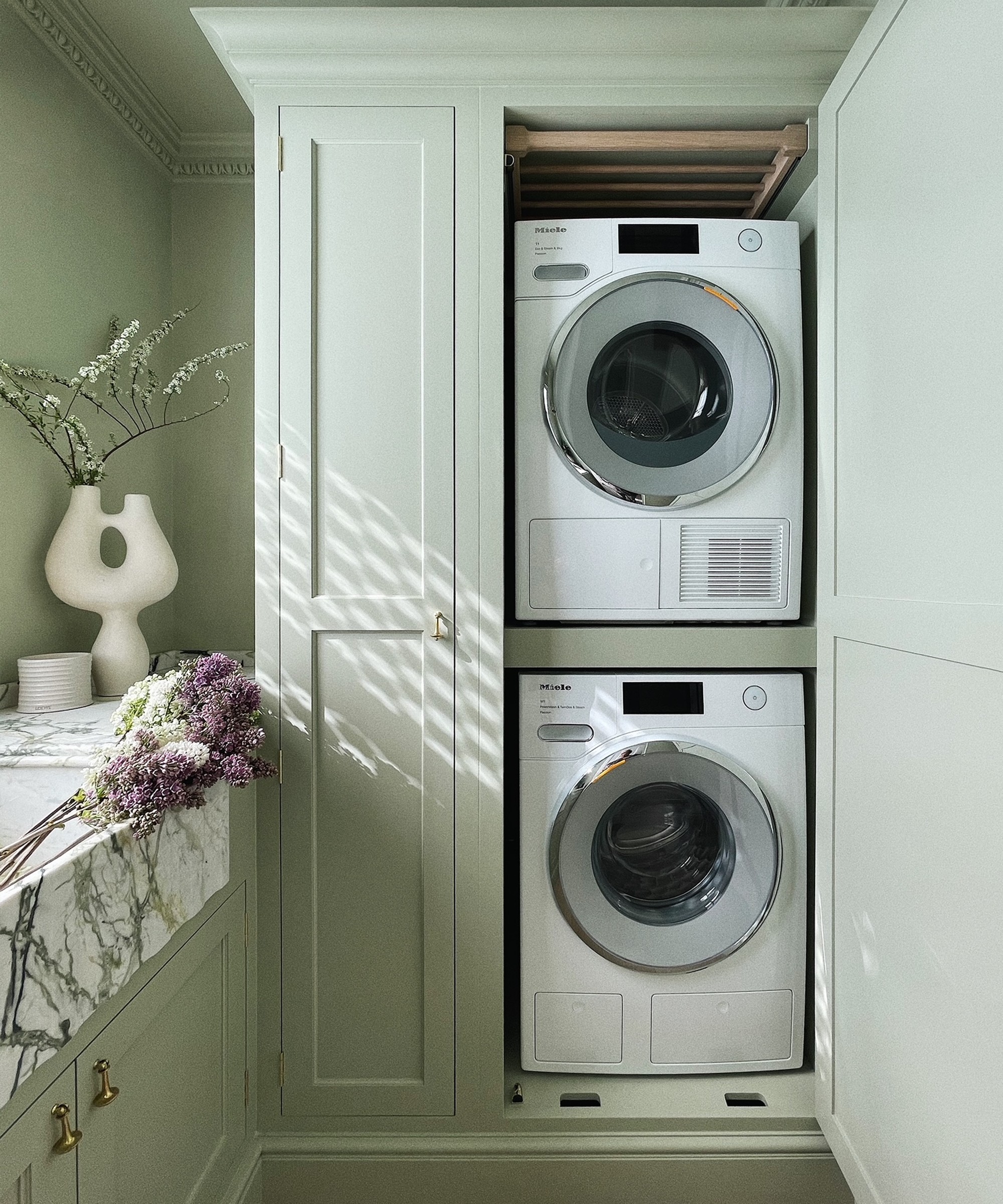
Finally, check your energy tariff to find out whether washing at certain times could be costing you more than others.
'Did you know that your utility company or supplier might alter energy rates based on energy demand?' asks energy expert Garside. 'This is called time-of-use pricing, and it offers lower energy prices during periods with lower energy demands and higher energy prices when demands reach their peaks.'
These peak periods are often the late afternoon or early evening, as people head home from work and begin cleaning and doing laundry, and washing at these times can lead to more expensive energy bills.
'If it's an option, run your washing machine during off-peak hours to cut down on energy costs,' says sustainable cleaning expert Green. 'A little planning with your laundry schedule could make a noticeable difference on your bill.'
You should not, however, leave clothes in the washing machine overnight or leave washing machines unattended when on, so bear these factors in mind when deciding what time works best for you to wash.
The same goes for drying laundry, if you are wondering how much it costs to run a tumble dryer.
FAQs
Why is my washing machine using so much electricity?
If your washing machine is using a significant amount of electricity, or more than expected, it is probably down to the size of the loads you are washing.
Heating water to wash clothes accounts for a large portion of your machine's consumption, particularly if it is heating water which is then being wasted or unused.
Instead, only wash full-loads, which is a thing people who are good at laundry always do.
There are many other ways to be sustainable at home – from recycling and repurposing household items, to shopping secondhand and turning the heating down.
It's a good idea, too, to investigate your emissions to find out where you are spending the most. You can do so by investing in a smart meter, and regularly carrying out maintenance tasks to lower your energy bills.







